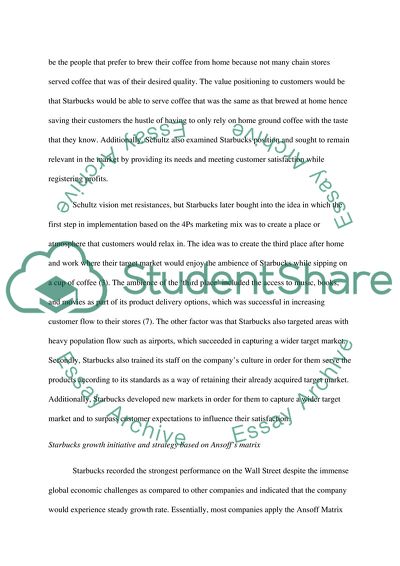TROUBLE BREWS AT STARBUCKS--Case Study Case Example | Topics and Well Written Essays - 500 words. Retrieved from https://studentshare.org/marketing/1657292-trouble-brews-at-starbucks-case-study
TROUBLE BREWS AT STARBUCKS--Case Study Case Example | Topics and Well Written Essays - 500 Words. https://studentshare.org/marketing/1657292-trouble-brews-at-starbucks-case-study.


